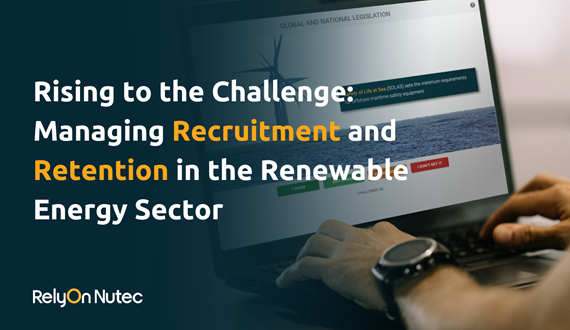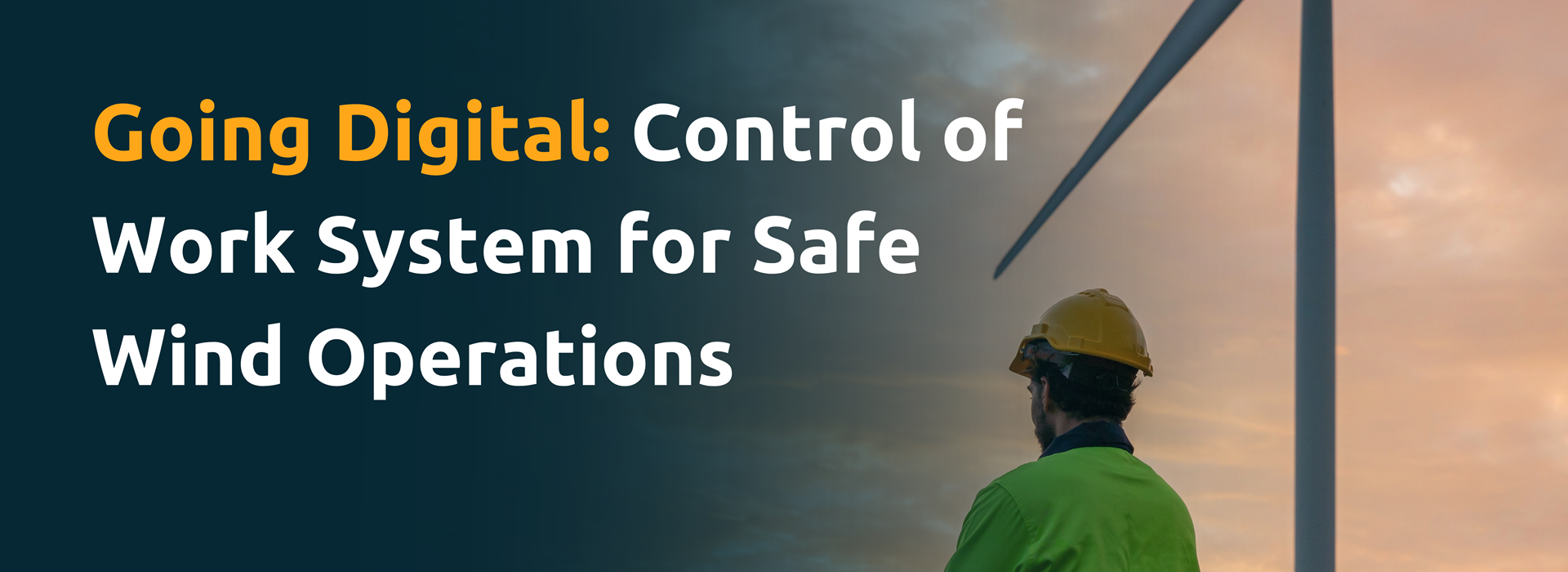Ok
The wind energy sector is experiencing rapid growth, which is expected to continue over the next decades. By 2050 renewables – predominantly wind and solar - are predicted to be responsible for 65-80 percent of global energy generation. Being a relatively young industry, the constantly evolving and changing wind energy landscape brings many safety challenges that need to be addressed, managed, and mitigated accordingly. As we foresee a huge growth in demand for wind energy, proper hazard prevention and management of the safety of people working in these high-risk environments are more important than ever.
What kind of occupational hazards do frontline workers face daily?
Before emerging into safety precautions however, it is also important to understand the risk landscape workers operate in. Frontline workers in the wind energy industry navigate a myriad of safety risks, varying from machinery breakdowns and inadequate equipment handling to energy isolation. Five of these common risks are listed below, highlighting the multifaceted nature of safety concerns in this dynamic sector:
- Machinery Breakdown/Misuse: The complex mechanical components of wind turbines, if not properly maintained or operated, can lead to malfunctions and accidents. Regular equipment inspections, maintenance protocols, proper training and adherence to operational guidelines are crucial.
- Energy Isolation: Wind turbines generate substantial energy, and effective isolation procedures are vital during maintenance or repair activities. Failure to properly isolate energy sources can lead to electrocution or other serious injuries. Workers must be well-versed in energy isolation protocols, and the implementation of fail-safe mechanisms is critical to ensuring their safety.
- Confined Spaces: Many tasks within the wind energy sector involve working in confined spaces, such as turbine towers or nacelles. The inherent risks of confined spaces, including limited entry and exit points and potential atmospheric hazards, require meticulous planning and adherence to safety protocols.
- Electrical Currents: Workers in the wind energy industry face the constant presence of electrical currents associated with power generation and transmission. Strict adherence to electrical safety procedures, regular equipment inspections, and the use of insulated tools and protective gear are essential to prevent accidents related to electrical currents.
- Fall Hazards: The elevated nature of wind turbines exposes workers to the risk of falls, which can result in grave injuries, even fatalities. Adequate fall protection measures, such as the use of safety harnesses, guardrails, and comprehensive training on working at heights, are crucial for mitigating this risk. Regular inspections of safety equipment and adherence to established protocols are imperative.
Enhancing Safety in Renewable Energy with WorkSafe
Being proactive about safety, getting the relevant information across the relevant teams and providing the necessary training is the cornerstone of a safe work environment. However, managing these functions simultaneously and following up continuously can be challenging.
Having the right framework to realize, assess, prevent and manage these risks in a safety-critical environment is more than necessary. WorkSafe, RelyOn Nutec’s Control of Work system, is meant to ensure just that. WorkSafe can enable risk management, operational optimization, and the cultivation of a safety-oriented culture within high-risk industries.
The flexible and easily customizable system of WorkSafe can meet the unique requirements of your organization. Facilitating comprehensive risk assessments, WorkSafe enables businesses to identify, evaluate, and control potential hazards specific to their operations, such as electrical equipment, sharp objects, or uneven surfaces. Additionally, the platform aids in safety management, providing tools for real-time monitoring and addressing safety risks promptly.
As the renewable energy industry operates within a framework of international standards and regulations, compliance becomes crucial. WorkSafe also offers a Permit to Work system, which enhances coordination and control over ongoing activities, with timely alerts and notifications to ensure adherence to protocols and prevent incidents. While incorporating a Supplementary Certificates function seamlessly into its workflow, allowing for the inclusion of critical safety certifications, WorkSafe also effectively manages Energy Isolations and Lock Out Tag Out procedures throughout their entire life cycle.
Safety and Efficiency with WorkSafe in Safety-Critical Industries
Control of work in safety-critical industries such as wind energy does come with certain challenges. As the industry evolves and the technology develops constant attention is needed to keep safety measures updated and maintain a safe work environment.
WorkSafe’s digital system can improve operational efficiency by providing a seamless platform to manage workflows, documentation, work permits from any location at any given time. The digital system minimizes the risks associated with human error and enhances efficiency across your organization. By automatically collecting data, Control of Work systems can help identifying potential risks, improving safety and optimizing internal processes.
Whether you are a small business or a large multinational corporation, WorkSafe can help you to protect your workers and ensure their well-being. By addressing daily challenges and prioritizing safety preparedness, workers become more aware and take ownership of their well-being. This not only fosters a safer working environment but also contributes to cost savings by reducing insurance and medical expenses. By prioritizing safety, while striving for efficiency, WorkSafe could play a crucial role in driving the future development of the industry.
Read more about our Control of Work solution, WorkSafe here, and get access to our webinar here.
Next read
-

-

-
 Article 14. June 2024
Article 14. June 2024 -

Ensuring Safety and Efficiency: IRATA Rope Access Training for a Safer Work Environment
In industries such as oil & gas and renewables, where accessing challenging locations is common, rope access methods provide a safe and efficient solution. These methods offer technicians a secure means of navigating heights and restricted areas while minimizing environmental impact. However, proficiency in rope access requires proper training and a globally accepted safety education.
Article 4. June 2024 -

Polaris Sells RelyOn Nutec to Mubadala Capital
The acquisition, part of Mubadala Capital’s flagship Private Equity Fund IV, strengthens the asset manager’s footprint in the business services sector.
Article 24. May 2024 -

RelyOn Nutec Acquires Electrical Training and Consultancy Specialist Quercus Technical Services, Fast-tracking European Electrical Capability Build
Effective May 21st, RelyOn Nutec has acquired Quercus Technical Services BV, one of the largest specialist electrical safety and skills training organizations in the Netherlands. The acquisition of Quercus bolsters RelyOn Nutec’s position in the electrical training market and accelerates its European roll out.
Article 22. May 2024 -

-
 Article 2. May 2024
Article 2. May 2024
